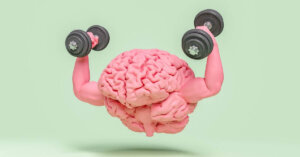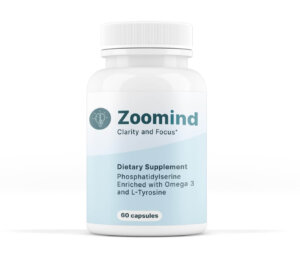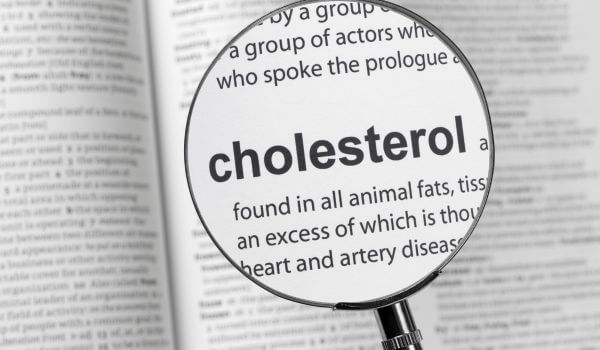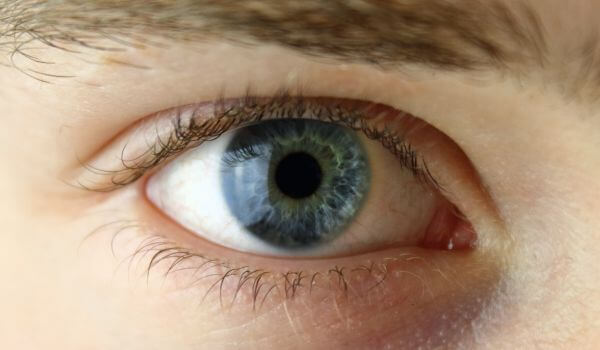Phosphatidylserine (PS) has captured the attention of the medical and wellness communities. It is safe to say it’s “trending” after Dr. Andrew Huberman, professor at Stanford, and host of the wildly popular podcast, Huberman Lab, researched its effects as a dopamine precursor and found it important as a potential (and adjunct) treatment for ADHD in children and adults. Check out episode 42: Nutrients For Brain Health & Performance.
PS aids in releasing the neurotransmitter dopamine, which many other therapies for ADHD also target because it is fundamental in cognitive function and mood regulation. As Dr. Huberman explains, doctors found it important as a potential (and adjunct) treatment for ADHD in children and adults.
So, Phosphatidylserine: What is it?
It’s a mouthful; here’s how it’s pronounced:
faa·sfuh·ti·dil·sr·een
Phosphatidylserine is a naturally occurring fat – or lipid – called a phospholipid. Don’t let the word ‘fat’ conjure up the wrong image of belly flab. Those fats are one particular form of lipids used to store energy for later use – that’s why taking in too much energy in food and not burning it up in bodily activity makes us grow fat. A phospholipid, on the other hand, is a structural fat that is used to build something in or around a cell.
Structural lipids are synthesized from fatty acids, which makes them different from triacylglycerols (LCTs) that form body fat. The significance of that difference will become more obvious as you read later on about how important fatty acids, or rather the right fatty acids, are to getting the brain to work at peak performance levels.
Phosphatidylserine: Where does it work, and what does it do?
Phosphatidylserine has many different biochemical actions that relate mainly to the outer covering of cells, and it is found in high concentrations in the brain. It is central to communication efficiency between brain cells (neurons). Communication between neurons is the basis of thinking, decision-making, intelligence, and all cognitive function.
In the case of ADHD, its function is to boost the levels of dopamine in the brain, a neurotransmitter involved in feelings of pleasure and attention regulation. About three-quarters of children with ADHD in the US receive some form of ADHD treatment, and most commonly, kids are prescribed stimulants, whose main function is to increase dopamine levels. According to Additude, 70% percent of children with ADHD are recommended by a healthcare provider to take a stimulant throughout their grade school experience.
Phosphatidylserine: Where do we get it, and how much do we need?
Phosphatidylserine can either be absorbed from food intake or manufactured in the body. Unless you consume unusually high volumes of a small range of foods especially high in phosphatidylserine, like soy and sunflower lecithin, beef liver, or egg yolks, maintaining optimal levels may be difficult. Some other foods provide moderate levels of PS (examples include Atlantic mackerel and herring, and chicken hearts), but these are more challenging to include in a kid’s diet. What’s more important is that on a weight-for-weight basis, all the alternatives score barely one-tenth of the levels of PS that soy lecithins can provide.
Equally important is that many popular diets score extremely badly regarding PS content. As expected, diets restricting the intake of fats and cholesterol will contain very little dietary phosphatidylserine, depriving your body of 150 mg out of the optimum 300 – 750 mg of daily needs. More surprisingly, a strict vegetarian diet may score much worse, knocking about 250 mg out of the daily intake.
The normal body cannot synthesize anything like the full level of PS that is consumed in everyday activity, and so people sensitive to the disruptions that low PS can cause can start to manifest the symptoms of ADHD when dietary input falls below the required levels for a sustained period.

Zoomind, our newest ADHD support supplement is available for sale and is rich in phosphatidylserine as well as omega-3 and L-tyrosine.
Phosphatidylserine and Polyunsaturated Fatty Acids (PUFAs) work in a Synergy.
Phosphatidylserine and PUFAs are intertwined structurally. A phospholipid molecule comprises a fatty acid attached to a phosphate and an alcohol.
An exciting association between polyunsaturated fatty acids and phosphatidylserine is now emerging in treating ADHD. Both PUFAs and phosphatidylserine play a vital role in enhancing cognitive functions. Phosphatidylserine promotes neurotransmitter release, while PUFAs have anti-inflammatory effects that support overall brain health.
The dual role of phosphatidylserine and PUFAs in ADHD treatment hints at a possible synergistic effect, with the common pathways influencing brain function suggesting a complementary relationship.
In general, people get a sufficient supply of fatty acids in total in an average daily diet, but there is frequently an imbalance between omega-3 and omega-6, and most people only get enough omega-6 and have some deficiency in omega-3.
Studies have found that supplementing the diet of children and adults with ADHD with omega-3 PUFAs may improve attention, cognitive functions, and behavioral control.
How Does Phosphatidylserine Work as an ADHD Treatment?
Phosphatidylserine offers some fascinating potential as an ADHD treatment, improving cognitive functions, attention, and behavior. Although further research is still needed, the results suggest that it worthwhile for anyone trying to help a person with the disorder to sit up and take notice.
In one study conducted at the ADHD Unit of the Geha Mental Health Center in Israel, the main conclusion was that PS supplementation via a soya lecithin extract significantly improved all three subtypes of ADHD. In contrast, no significant differences were observed in measurements in a control group.
Another study focused on how phosphatidylserine and omega-3 polyunsaturated fatty acids work together to reduce ADHD symptoms in children. The study’s key finding was a significant reduction in the restless and impulsive behavior of the participants, as well as in mood disruptions. The conclusions coming out of this study suggest that PS with omega-3 may reduce ADHD symptoms in children and be especially effective in hyperactive-impulsive ADHD children.
Larger and more rigorous studies are needed to establish phosphatidylserine’s role in ADHD treatment definitively. Still, there are positive signs that the integration of a supplement incorporating phosphatidylserine and PUFAs into a comprehensive ADHD treatment plan could provide a new path for managing this condition in both children and adults.
If you’re interested in how PS can help boost your brain, try Zoomind today and let us know how it works for you!
FAQ
What is ADHD?
ADHD is usually classified into three subtypes according to the presentation of the symptoms. The inattentive subtype is when the child can forget personal belongings or things needed for daily activities, has problems concentrating on homework or necessary tasks, and often procrastinates in tasks requiring concentration. The hyperactive-impulsive subtype describes a restless child in the classroom exhibits excessive energy, cannot sit still, often interrupts others during conversation, and cuts in lines. Most often, children exhibit both inattentive and hyperactive-impulsive attributes. They are classified as being in the combined subtype or Attention-deficit/Hyperactive.
ADHD also has high comorbidity with other psychiatric disorders, such as anxiety and depression. If it persists into later years, it can go hand in hand with substance abuse.
What is the role of dopamine in ADHD?
A ‘dopamine deficit theory’ has been proposed to explain ADHD. Dopamine is an essential neurotransmitter to the body and brain, affecting mood, attention, motivation, and movement. It has been observed that people with ADHD also tend to have a higher concentration of dopamine transporters (DAT) in the brain. This results in dopamine being removed faster from their brain cells than in normal brains. The consequential imbalance of dopamine results in the typical manifestation of ADHD symptoms like inattention, hyperactivity, and impulsivity.
Does inflammation play a role in ADHD?
The involvement of inflammation in the mechanisms leading up to ADHD has emerged in more recent studies. Children who have been diagnosed with ADHD often present with other disorders that can be associated with chronic inflammation, including atopic dermatitis (eczema), allergic rhinitis (inflammation in the nose), and some autoimmune diseases.
Inflammation is a self-protective reaction by the body to fight off infection by bacteria and viruses and to heal injuries. However, prolonged inflammation harms the body’s tissues and organs and may leave the body in a constant state of alertness.
Chronic inflammation may affect the developing brain. Studies show that chronic inflammation in children can impair social cognition and facial recognition. Problems like being unable to pick up social clues or recognize familiar faces are commonly observed in children with ADHD.
Are cortisol levels important in ADHD?
There is growing interest in the role that cortisol plays in aggravating the symptoms of ADHD. Cortisol is known as the stress hormone, responsible for the fight-or-flight response.
Research has shown that children with abnormal cortisol levels, whether higher or lower when compared with children without ADHD, tend to have poorer cognitive functions. Alternatively, a low cortisol level can prevent the body from absorbing nutrients crucial for cognitive development. This has been positively associated with novelty-seeking behaviors that are more typical of children with hyperactivity disorder.
Counteracting the role of inflammation in ADHD and normalizing stress hormones such as cortisol may offer another treatment direction for ADHD.
















